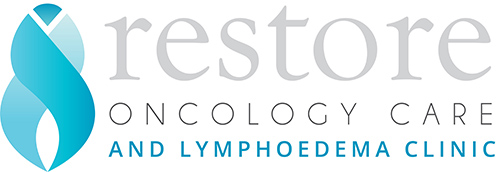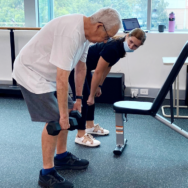When we think about treatment options for lymphoedema…lymphatic massage, compression garments, exercises and skin care may come to mind. There is also a lesser-known treatment modality commonly used by lymphoedema therapists that is gaining more recognition due to growing research and evidence. That treatment option is Low Level Laser Therapy (LLLT) or Photobiomodulation (PBM).
What is laser and how does it work?
Laser stands for:
Light Amplification by Stimulated Emission of Radiation
Laser was first used medically, in the 1960s for wound healing due to its properties affecting tissue and cell regeneration. It was introduced as a treatment for lymphoedema in 1995.
The laser light penetrates the tissue and produces a photochemical reaction. The laser is absorbed by the cells and converted into energy which affects the metabolic processes within the cell. It can affect different types of cells and tissue including:
- Macrophage cells- a type of white blood cell that removes dead cells and stimulates the action of other immune cells.
- Fibroblasts- a type of cell that is involved in the formation of connective tissue
- Lymphatic tissue- there is some evidence that laser can stimulate lymphogenesis (regeneration of the lymphatic system) and lymphatic motoricity (the movement of lymph).
How does this affect the lymphatic system?
Laser can improve the efficiency of the lymphatic system by:
- Stimulating new lymphatic pathways
- Increasing activity and movement of fluid within the lymphatic vessels
- Softening scars and scar tissue that restrict lymphatic flow
- The overall improvement in lymphatic flow can cause a reduction in swelling and volume of the affected limb
- Laser works well when paired with massage, compression therapy and exercise
What are the benefits for patients with specific complaints?
Radiation Fibrosis
- Radiation fibrosis describes the hardening and thickening of the tissue that has been treated with radiation therapy
- Patients can experience symptoms of tightness and stiffness in their skin, muscle and other connective tissue, as well as organs such as the lungs
- Tissue fibrosis can inhibit lymphatic regeneration
- Hardening, thickening and scar tissue can all have a detrimental effect on the movement of lymphatic fluid in the area
- Laser can help to soften fibrotic tissue, improve skin texture and thickness, which in turn can improve lymphatic flow
Cording
- Cording is a condition which can develop after breast cancer-related surgery, especially the removal of lymph nodes
- String-like cords can be felt and/or seen in the armpit, in the arm, across the chest and even in the abdomen
- The “cords” are thought to be caused by inflammation and hardening of lymphatic vessels after surgery
- When the arm is lifted, the cord is stretched, causing pain and restriction in range of motion
- Laser can assist in breaking down this scar tissue which leads to an improvement in pain and range of motion
What does laser treatment involve?
Laser doesn’t generate heat, so the patient generally feels no sensation during treatment and there are no known side effects. The laser is held on an area of skin for around 60 seconds at a time, it is then moved to the adjacent area about 2cm apart. Treatment can take anywhere between 5 and 20 minutes depending on the size of the area.
There is often an immediate reduction in pain at the time of treatment. Fibrotic and thickened tissue treated with laser can feel immediately softer, which in turn can improve lymphatic flow and lead to a reduction in inflammation and swelling, especially if paired with manual lymphatic drainage (MLD).
If laser is something that you feel could help you in your recovery, please don’t hesitate to ask your therapist at your next appointment or call the clinic to book in.



No Comments
Sorry, the comment form is closed at this time.